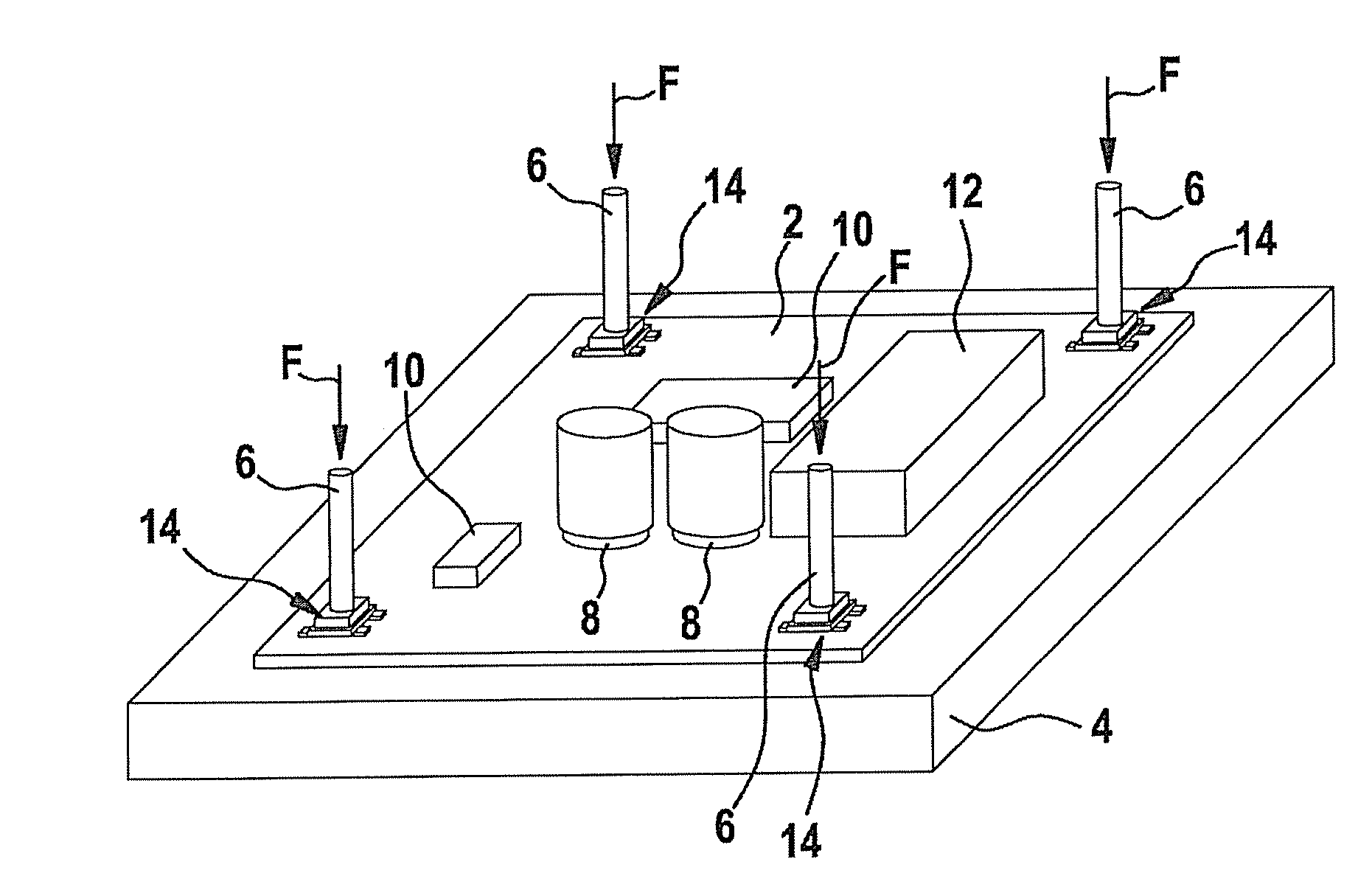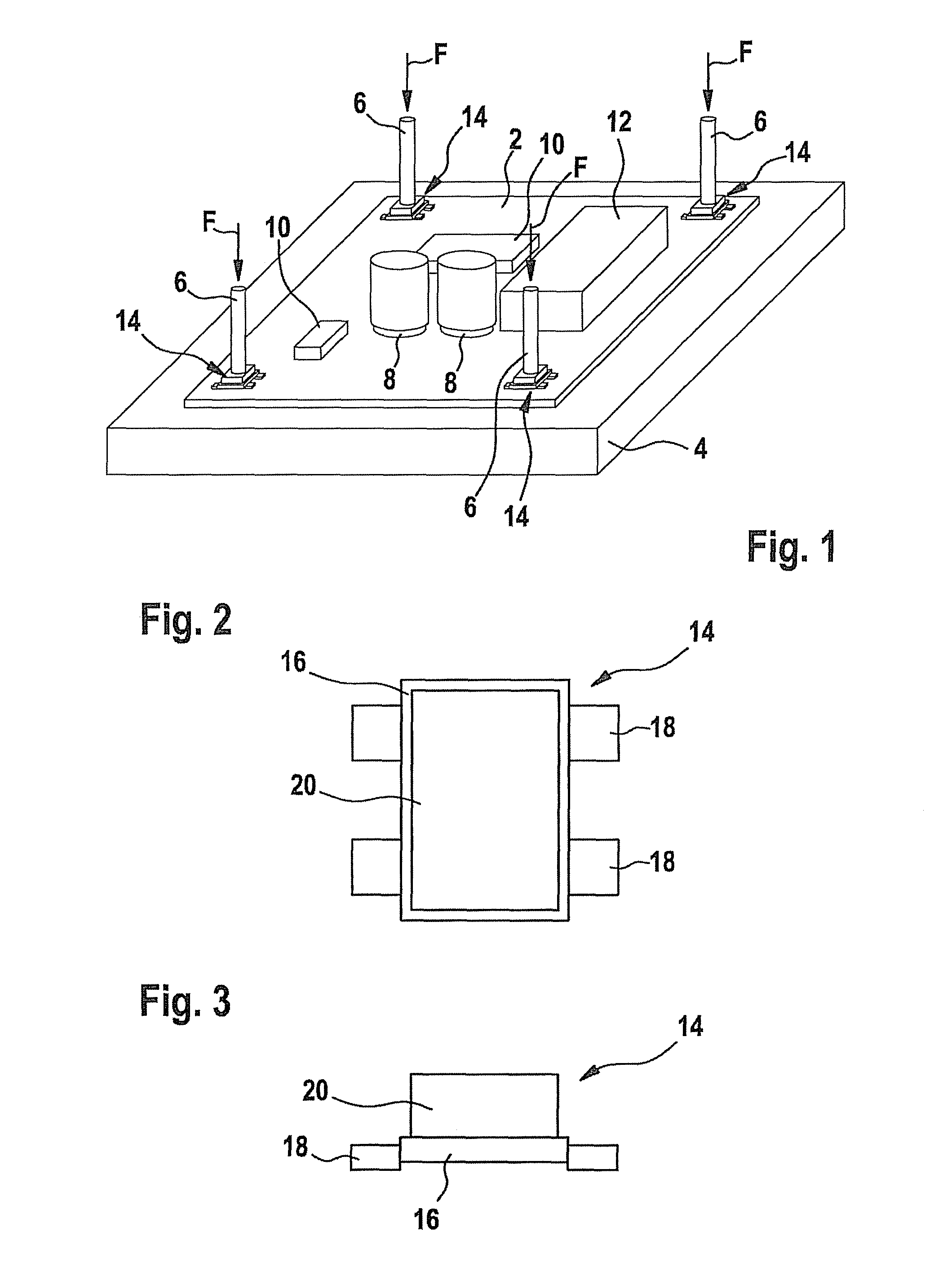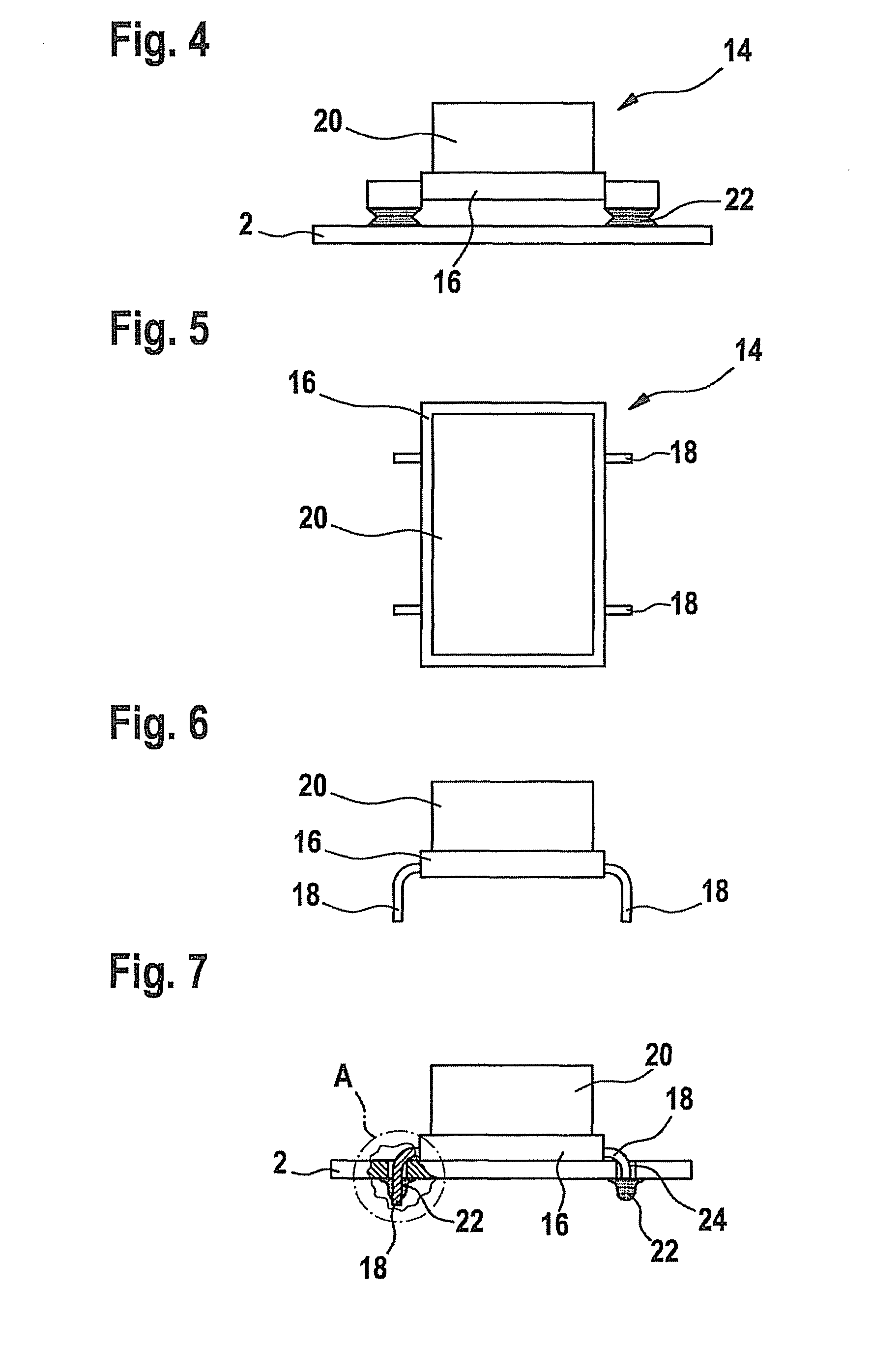Method for fixing an electrical or an electronic component, particularly a printed-circuit board, in a housing and fixing element therefor
a technology of printed circuit boards and components, which is applied in the direction of electrical apparatus casings/cabinets/drawers, final product manufacturing, and connection of coupling devices, etc., can solve the problems of affecting the tolerance of printed circuit boards and housings, and affecting the quality of printed circuit boards
- Summary
- Abstract
- Description
- Claims
- Application Information
AI Technical Summary
Benefits of technology
Problems solved by technology
Method used
Image
Examples
Embodiment Construction
[0022]The printed-circuit board 2, shown best in a drawing in FIG. 1, is fixed in a housing a clamping connection, by pressing it on from above by its underside against a firm, even substratum 4, for instance, a floor of the housing. The pressing-on of printed-circuit board 2 against substratum 4 takes place with the aid of a plurality of cylindrical holding pins or similar extended housing projections 6, which project, for instance, above the lower side of the cover (not shown) of the housing, and, when the cover is closed, extend downwards into the vicinity of printed-circuit board 2, past a plurality of electronic components mounted on the face of printed-circuit board 2, such as capacitors 8, memory chips 10, processors 12 and the like, where they exert in each case a clamping force (arrows F) on a fixing element 14 that is rigidly mounted below each projection 6 on the face of printed-circuit board 2, in order to press fixing element 14, and via it, printed-circuit board 2, dow...
PUM
| Property | Measurement | Unit |
|---|---|---|
| elastic | aaaaa | aaaaa |
| electrically conductive | aaaaa | aaaaa |
| adhesion | aaaaa | aaaaa |
Abstract
Description
Claims
Application Information
 Login to View More
Login to View More - R&D
- Intellectual Property
- Life Sciences
- Materials
- Tech Scout
- Unparalleled Data Quality
- Higher Quality Content
- 60% Fewer Hallucinations
Browse by: Latest US Patents, China's latest patents, Technical Efficacy Thesaurus, Application Domain, Technology Topic, Popular Technical Reports.
© 2025 PatSnap. All rights reserved.Legal|Privacy policy|Modern Slavery Act Transparency Statement|Sitemap|About US| Contact US: help@patsnap.com



